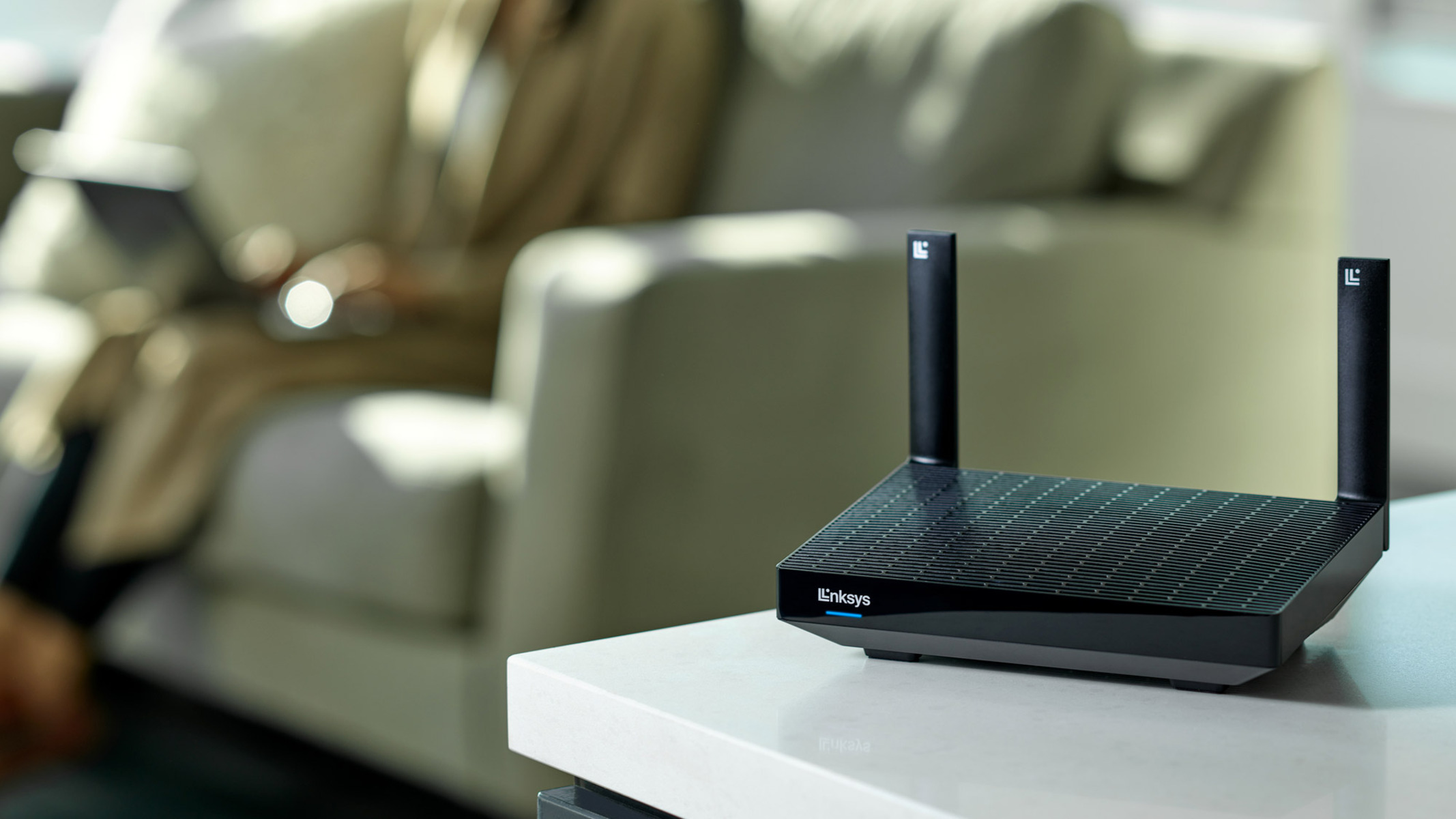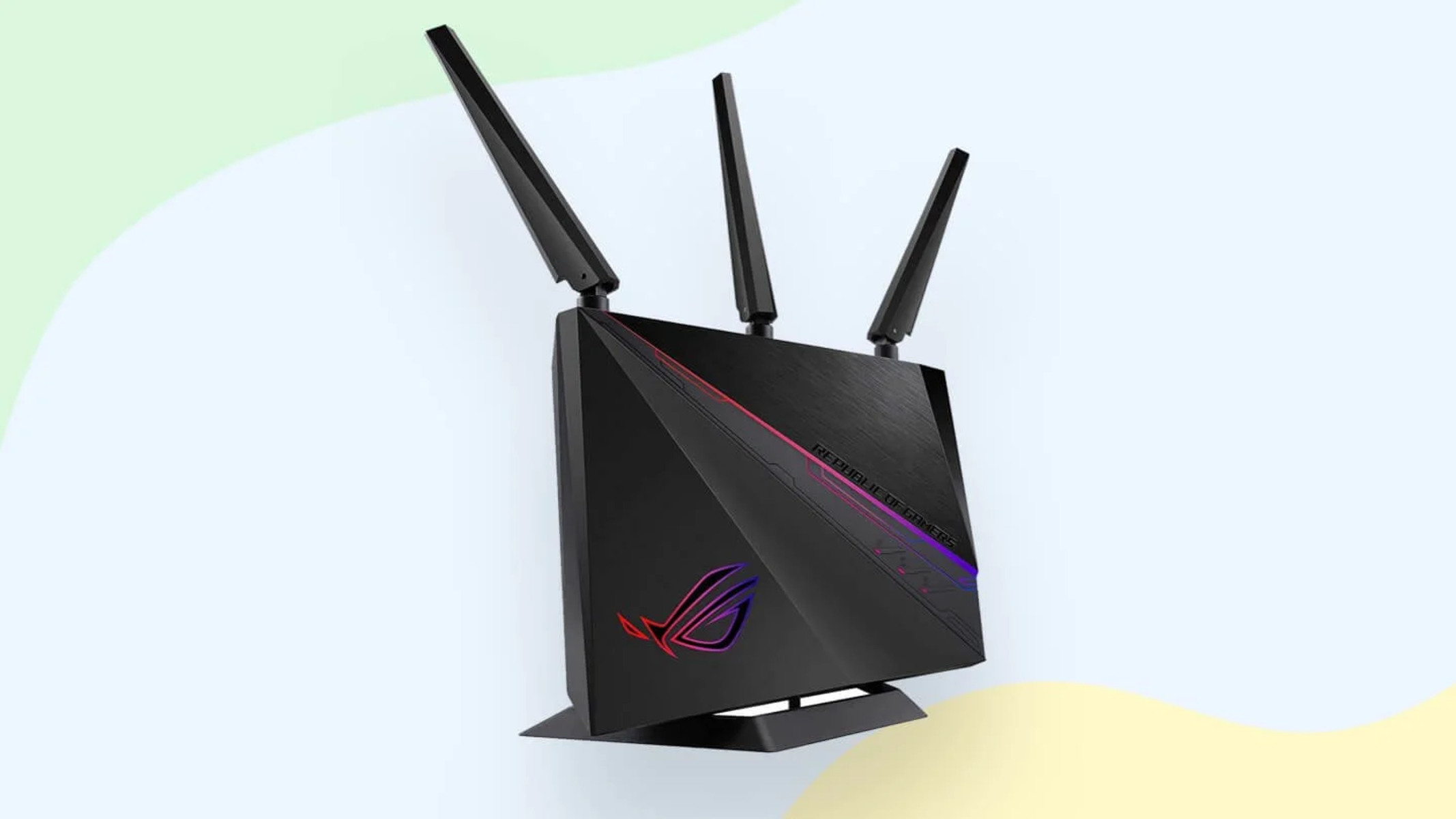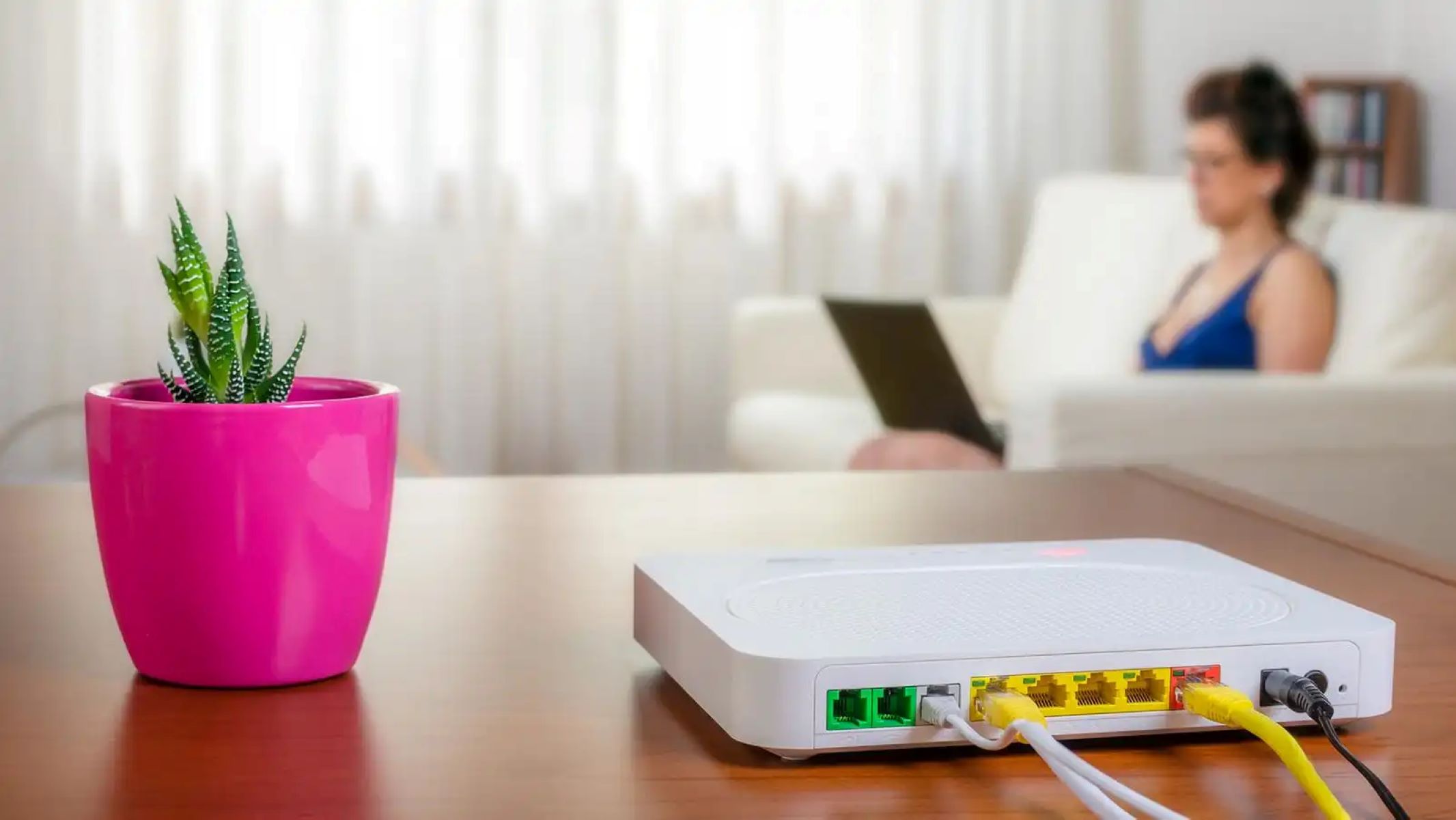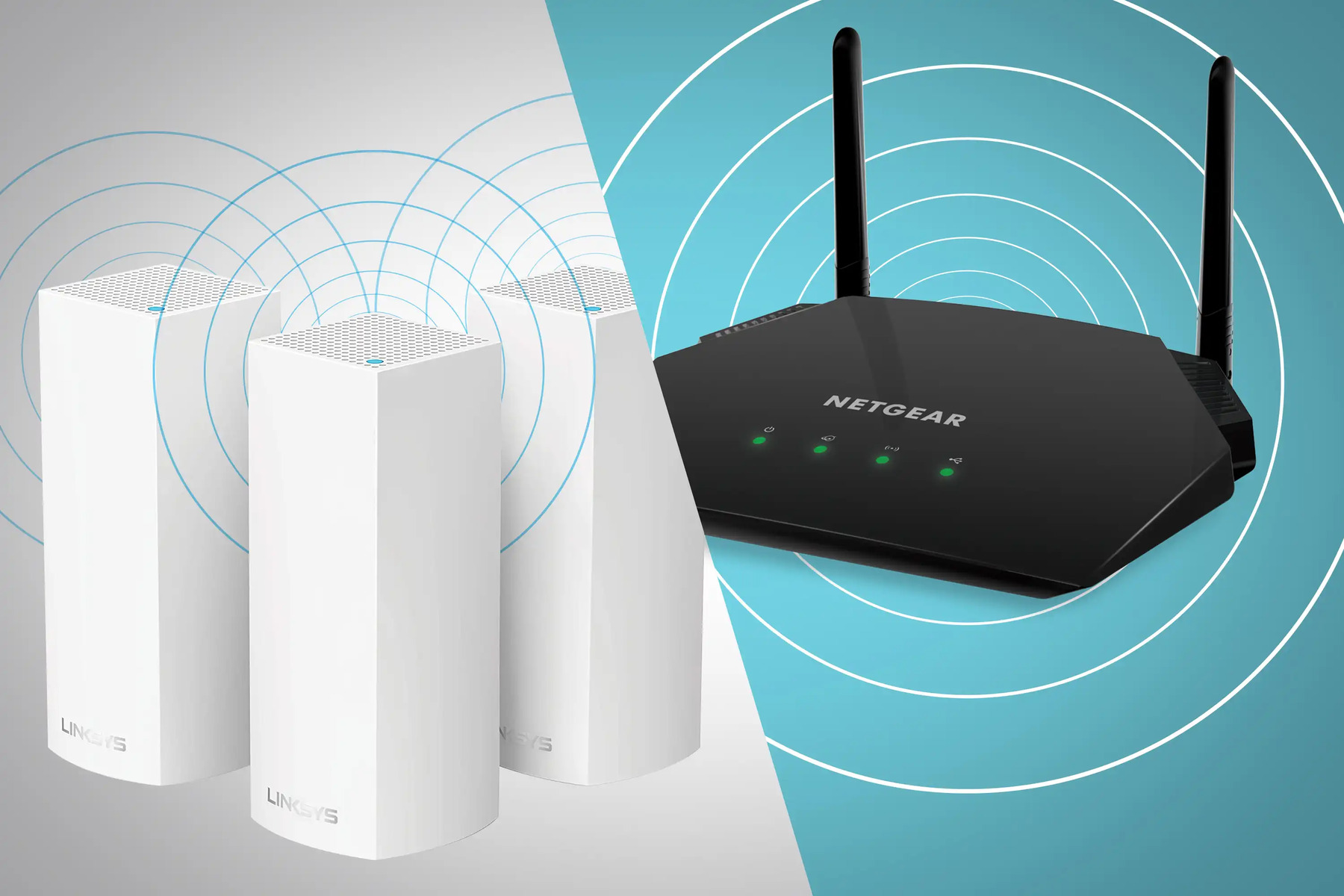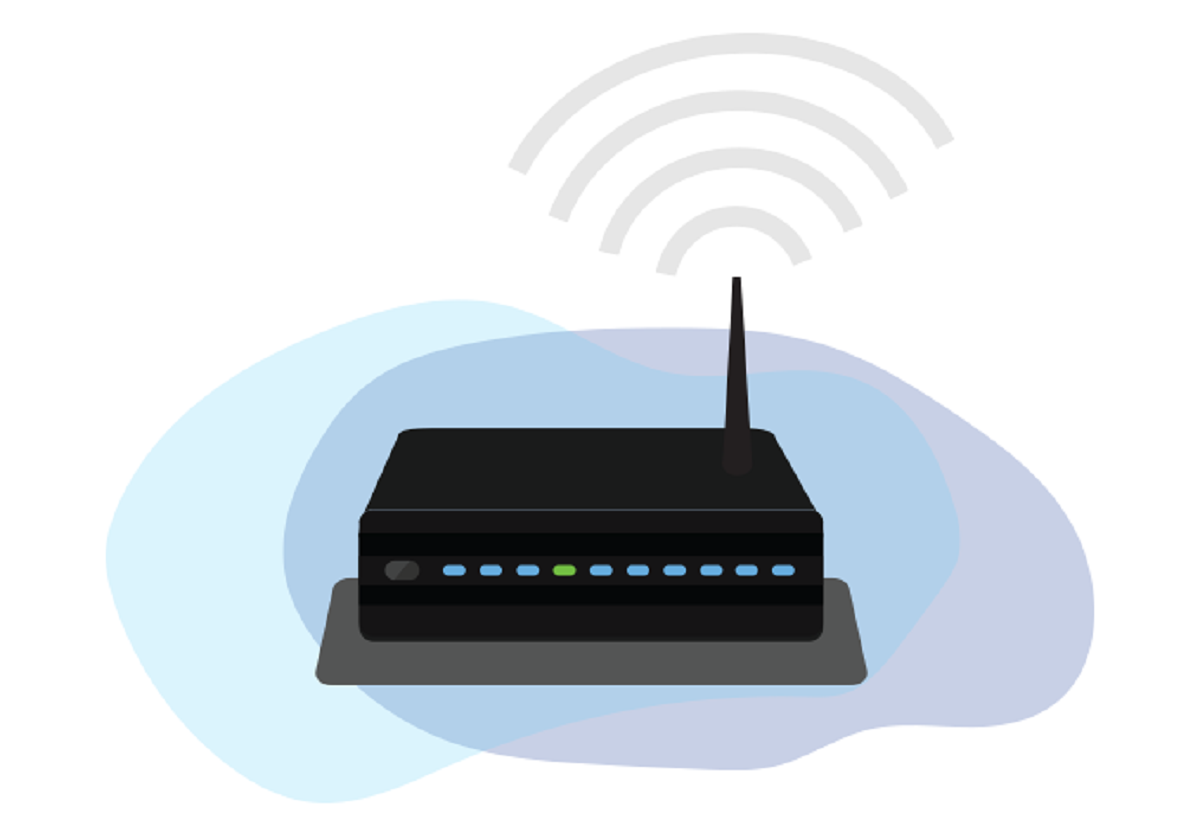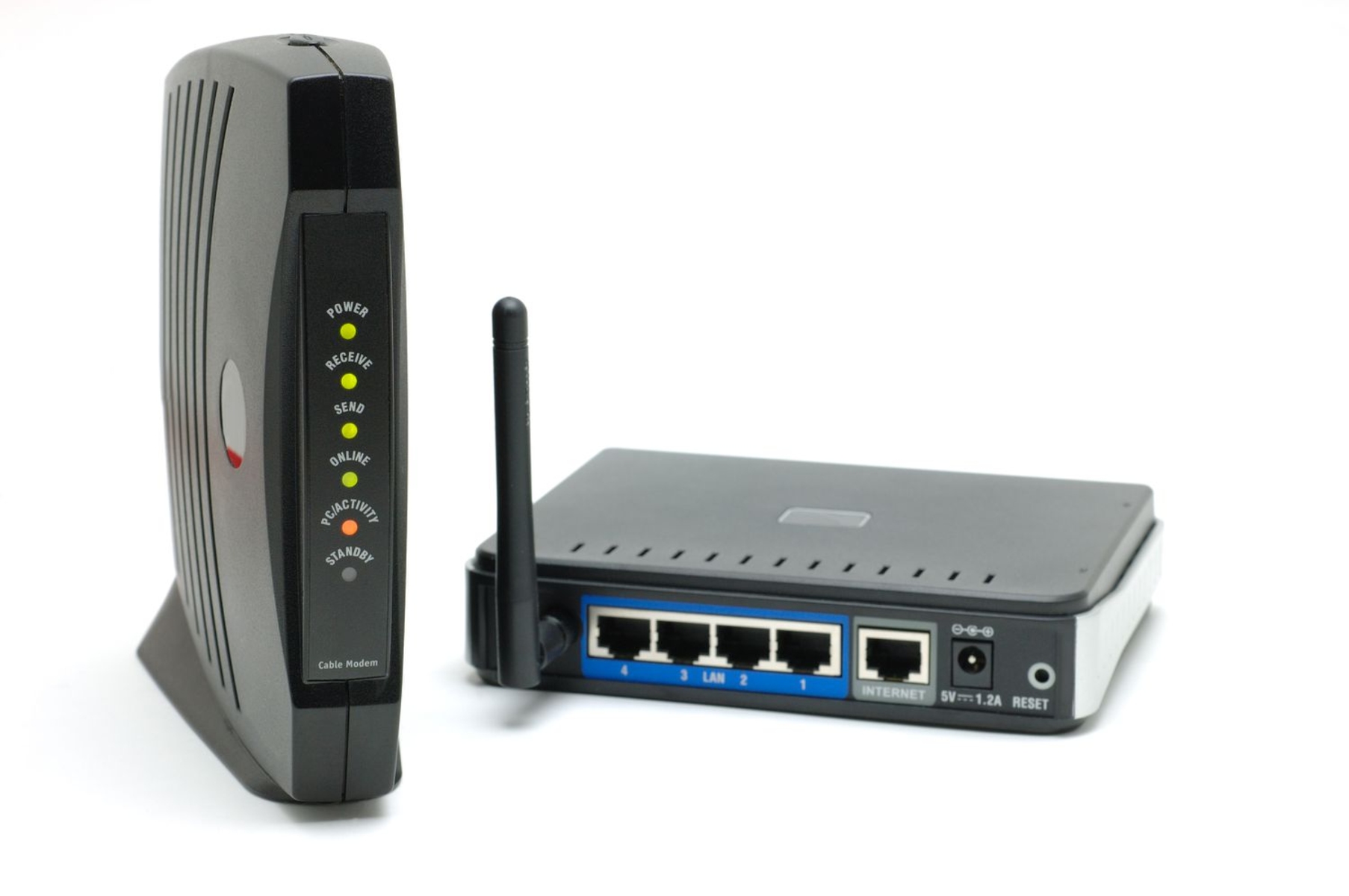Introduction
Welcome to the world of wireless connectivity! With the increasing reliance on the internet for work, entertainment, and communication, having a strong and reliable Wi-Fi connection at home has become essential. One of the key components of a robust Wi-Fi network is the placement of your wireless router. The location of your router plays a crucial role in determining the signal strength and coverage throughout your home.
Have you ever experienced dead spots or weak signals in certain areas of your house? This could be due to poor placement of your wireless router. By strategically positioning your router, you can optimize your Wi-Fi performance and enjoy seamless connectivity throughout your home.
In this article, we will explore the factors to consider when choosing the ideal location for your wireless router. From centralizing its position to avoiding obstacles and interference, we will provide you with valuable tips to help you make an informed decision. So, let’s dive in and discover the best spot to place your wireless router!
Factors to consider when choosing the right location for your wireless router
When it comes to optimizing your Wi-Fi signal, the placement of your wireless router is crucial. Here are some factors to consider when choosing the right location:
- Centralized location: To ensure that your Wi-Fi signal reaches every corner of your home, it’s important to place your wireless router in a centralized location. This allows the signal to distribute evenly in all directions, minimizing signal loss and dead spots.
- Avoid obstacles: Obstacles such as walls, furniture, and appliances can obstruct the Wi-Fi signal and reduce its range. When positioning your router, try to avoid placing it behind large objects or near metal surfaces that can interfere with the signal. Clearing the surrounding area of any potential obstructions will help maximize signal strength.
- Keep it elevated: Placing your wireless router on a higher surface can significantly improve its coverage. The elevated position helps to reduce signal interference caused by furniture and other objects on the ground. Consider placing it on a shelf or mounting it on the wall for optimal performance.
- Consider interference: Wi-Fi signals can be disrupted by interference from other electronic devices, such as cordless phones, baby monitors, or microwave ovens. Keep your router away from these devices to avoid signal degradation. Additionally, consider using dual-band routers that can operate on both 2.4GHz and 5GHz frequencies to minimize interference from neighboring Wi-Fi networks.
- Stay away from appliances and electronics: Certain appliances and electronics emit electromagnetic waves that can interfere with your Wi-Fi signal. Refrigerators, TVs, and Bluetooth devices are common culprits. Ensure that your router is placed at a sufficient distance from these devices to maintain a strong and stable signal.
- Experiment with different locations: Finding the ideal placement for your router may require some trial and error. Don’t be afraid to experiment with different locations in your home to determine which offers the best coverage. Use apps or tools that can measure Wi-Fi signal strength to help you identify areas with weaker signals.
By considering these factors and taking appropriate measures, you can maximize the performance and reach of your wireless router. Now that you have a clearer understanding of the different aspects to consider, let’s explore the importance of each factor in more detail in the following sections.
Centralized location
When it comes to placing your wireless router, one of the most important factors to consider is finding a centralized location within your home. By positioning your router at the center of your living space, you can ensure that the Wi-Fi signal is distributed evenly in all directions, minimizing signal loss and dead spots.
Why is a centralized location so crucial? Well, imagine your router being placed in one corner of your house. In this scenario, the Wi-Fi signal has to travel a longer distance to reach areas in the opposite corner, resulting in weaker signal strength and potential dead spots.
By placing your router in a centralized location, such as a hallway or a room located in the center of your home, you can achieve better coverage throughout the entire house. This can be especially beneficial when it comes to multi-story homes, as the signals will be able to penetrate through floors more effectively.
Keep in mind that obstructions like walls and furniture can still affect the signal, even when the router is centrally positioned. However, having a centralized location as a starting point ensures that the Wi-Fi signal has the best chance of reaching all areas of your home with minimal interference.
So, when determining the ideal placement of your wireless router, take into consideration the layout of your home and aim for a centralized location that allows for maximum signal distribution. This will help ensure a strong and reliable Wi-Fi connection throughout your living space.
Avoid obstacles
Another crucial factor to consider when placing your wireless router is to avoid any potential obstacles that can hinder the Wi-Fi signal. Obstacles such as walls, furniture, and appliances can absorb or weaken the signal, resulting in reduced signal strength and coverage.
When positioning your router, take note of any physical barriers that may obstruct the Wi-Fi signal. Thick walls and floors made of materials like concrete or brick can be particularly challenging for the signal to penetrate through. In such cases, it is best to place the router in a location that minimizes the number of walls it needs to go through to reach different areas of your home.
Additionally, large pieces of furniture placed between your router and devices can block or diminish the Wi-Fi signal. Avoid placing the router behind bookshelves, cabinets, or other bulky objects. If possible, place the router in an open area where the signal can travel freely.
Remember that the Wi-Fi signal travels in a straight line, so aim for a direct line-of-sight between the router and your devices. By removing any obstacles, you improve the chances of a strong and uninterrupted signal throughout your home.
In some cases, you might need to use range extenders or repeaters to overcome significant obstacles. These devices can help amplify and extend the Wi-Fi signal to areas that are difficult to reach directly from the router.
Overall, by being mindful of and avoiding obstacles that can block or weaken the Wi-Fi signal, you can ensure a more reliable and consistent connection throughout your home.
Keep it elevated
When it comes to optimizing the performance of your wireless router, elevation plays a crucial role. Keeping your router elevated can significantly improve its coverage and signal strength throughout your home.
Why is elevation important? Well, placing your router on a higher surface helps to minimize signal interference caused by furniture, appliances, and other objects on the ground. By elevating the router, you allow the Wi-Fi signal to travel more freely without being obstructed by physical barriers.
Consider placing your router on a shelf, desk, or any elevated surface that is away from potential obstructions. This will enable the signal to propagate more effectively in all directions, resulting in better coverage across the entire living space.
In addition to elevating the router itself, you can also benefit from installing it in a higher position within the room. Mounting the router on a wall, for example, helps to further increase its range and reach. By positioning the router on a wall, you ensure that the signal is not hindered by floor-level obstacles and that it can propagate more efficiently throughout the entire area.
Keep in mind that the optimal height and position for elevation may vary depending on the layout and size of your home. It may be helpful to experiment with different elevation options and monitor the signal strength in various locations using Wi-Fi signal measurement tools. This will allow you to find the best spot that offers maximum coverage and signal strength.
Overall, keeping your wireless router elevated provides better signal propagation and reduces interference, resulting in improved Wi-Fi performance and coverage throughout your home.
Consider interference
Interference from other electronic devices can significantly impact the performance and range of your Wi-Fi signal. When placing your wireless router, it’s important to consider and minimize potential sources of interference to ensure a strong and stable connection.
One common source of interference is other wireless devices operating on the same frequency. Cordless phones, baby monitors, and even neighboring Wi-Fi networks can compete for the same wireless frequency band, leading to signal degradation. To mitigate this, consider using a dual-band router that operates on both 2.4GHz and 5GHz frequencies. The 5GHz frequency band is typically less crowded and offers faster speeds, reducing the potential for interference.
Another culprit of interference is household appliances. Microwave ovens, for example, emit strong electromagnetic waves that can interfere with the Wi-Fi signal. It’s best to place your router away from areas where these appliances are in frequent use or consider using shielding materials to minimize interference.
Additionally, keep in mind that the distance and location of your router from other electronic devices can play a role in signal interference. TVs, stereo systems, and Bluetooth devices can emit electromagnetic waves that may disrupt or weaken your Wi-Fi signal. Try to keep your router at a safe distance from these devices to minimize interference.
Lastly, physical obstructions such as walls, floors, and even large mirrors or metal surfaces can also cause signal interference. While it may not be possible to completely avoid all obstructions, positioning your router in a way that minimizes the number of obstacles it needs to transmit through can help improve signal strength.
It’s worth noting that different homes and environments may have varying levels of interference, so it’s essential to monitor and adjust accordingly. You can use Wi-Fi analyzer tools or smartphone apps to detect potential sources of interference and make necessary adjustments to mitigate them.
By considering and minimizing potential sources of interference, you can optimize your Wi-Fi signal strength and improve the overall performance of your wireless network.
Stay away from appliances and electronics
When choosing the placement for your wireless router, it’s crucial to keep it away from appliances and electronics that can interfere with the Wi-Fi signal. Certain devices emit electromagnetic waves that can disrupt or weaken the wireless connection, affecting the performance of your network.
One common culprit is household appliances, such as refrigerators, microwaves, and cordless phones. These devices can generate electromagnetic interference that interferes with the Wi-Fi signal. To minimize this interference, it’s best to position your router away from areas where these appliances are used, particularly in the kitchen or near the refrigerator. The distance and physical separation from these appliances can help maintain a strong and stable Wi-Fi signal.
Another group of devices to consider are other electronics that operate on similar frequencies as Wi-Fi, such as Bluetooth devices and wireless speakers. These devices can share the same frequency spectrum as the Wi-Fi signal, resulting in potential interference. To minimize this, position your router away from areas where these devices are commonly used, or consider using devices that operate on different frequency bands to reduce interference.
It’s also worth noting that certain materials and objects can block or absorb Wi-Fi signals. Metal surfaces, mirrors, and thick walls can significantly weaken the wireless signal if the router is placed near them. Avoid placing your router directly behind or close to these types of objects to maintain better signal strength and coverage throughout your home.
To optimize the placement of your router and minimize interference, consider conducting a Wi-Fi site survey. This involves analyzing the signal strength in different areas of your home and identifying potential sources of interference. You can use Wi-Fi analyzer tools or smartphone apps to assist with this process. Based on the survey findings, adjust the position of your router accordingly to achieve optimal signal strength and coverage.
By keeping your wireless router away from appliances, electronics, and objects that can interfere with the Wi-Fi signal, you can enhance the performance and stability of your network, ensuring a seamless and uninterrupted connection for all your devices.
Experiment with different locations
Choosing the right location for your wireless router might require some trial and error. No two homes are exactly the same, and factors such as layout, construction materials, and even neighboring networks can affect Wi-Fi signal strength. To find the optimal placement, don’t be afraid to experiment with different locations.
Start by placing the router in a centralized position, preferably at an elevated location. This can provide a good starting point for signal distribution. However, it’s important to keep in mind that even small adjustments in positioning can make a significant difference in signal strength and coverage.
Begin by testing the Wi-Fi signal strength throughout your home using a Wi-Fi analyzer tool or smartphone app. These tools can help identify areas with weak signal or potential dead spots. Walk around different rooms and note the variations in signal strength in each location.
If you notice areas with weak signal, consider adjusting the position of the router and repeating the signal strength test. Experiment with moving the router higher, closer to walls, or away from potential obstructions. Each adjustment should be followed by another signal strength test to assess the impact of the change.
It’s also worth considering the option of using Wi-Fi extenders or repeaters in areas with persistent weak signal. These devices can amplify and extend the Wi-Fi signal to reach distant corners of your home or areas with significant signal degradation.
Throughout the experimentation process, be patient and give each adjustment enough time to see if there is an improvement. It might take several tries to find the ideal position that provides the best coverage and signal strength throughout your home.
Remember, what works for one home may not work for another, so it’s important to customize the placement of your router based on your specific environment and needs. By experimenting with different locations and making adjustments as needed, you can optimize your Wi-Fi signal and ensure a reliable connection throughout your home.
Conclusion
Choosing the right location for your wireless router is essential for ensuring a strong and reliable Wi-Fi connection throughout your home. By considering various factors such as centralizing the router, avoiding obstacles, keeping it elevated, minimizing interference, staying away from appliances and electronics, and experimenting with different locations, you can optimize your Wi-Fi signal strength and coverage.
A centralized location helps distribute the Wi-Fi signal evenly and reduces the chances of dead spots. Avoiding obstacles such as walls, furniture, and appliances ensures that the signal can propagate freely and reach every corner of your home. Keeping the router elevated helps minimize signal interference caused by physical barriers on the ground. Minimizing interference from other electronic devices and neighboring networks can improve signal quality. Staying away from appliances and electronics that emit electromagnetic waves maintains a strong Wi-Fi connection. Lastly, experimenting with different locations allows you to fine-tune the router’s placement based on the layout and characteristics of your home.
Remember, it’s important to regularly monitor the signal strength in different areas of your home and make adjustments as needed. Wi-Fi signal strength can vary due to factors such as distance, interference, and physical barriers, so it’s essential to find the best placement that works for your specific environment.
Optimizing the placement of your wireless router will not only enhance your internet experience but also provide a stable and seamless connection for all your devices. So take the time to find the ideal spot for your router and enjoy reliable Wi-Fi connectivity throughout your home.







